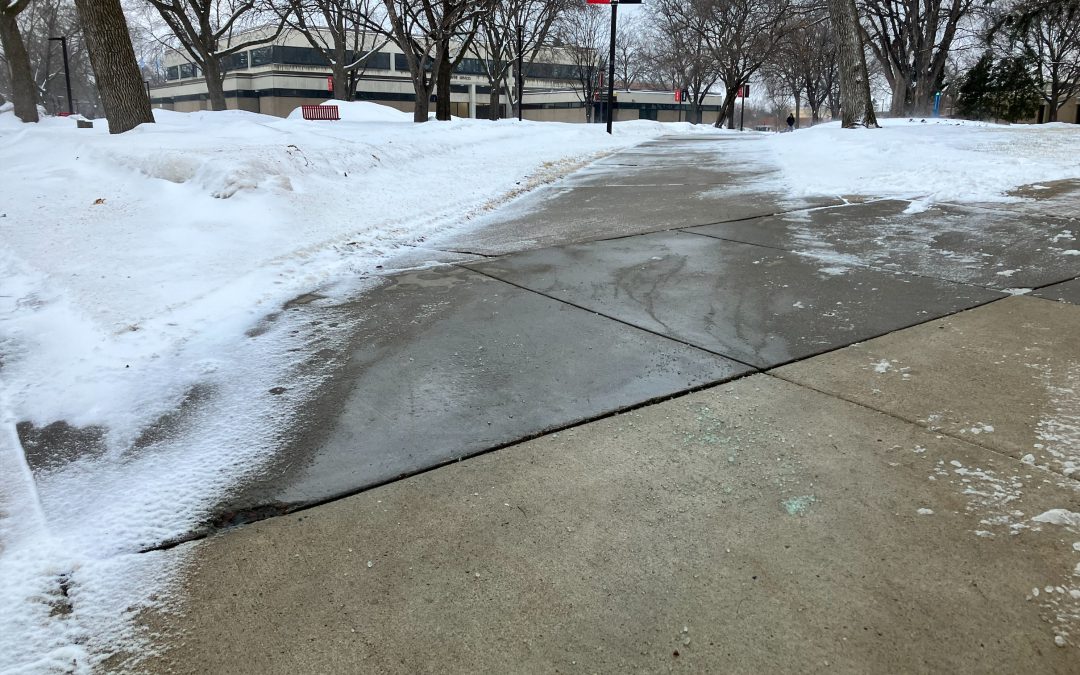Article Written by Nikhil Gulati. Photo by Nikhil Gulati.
On Feb. 12 temperatures of up to 40 degrees in St. Cloud caused an unusual rainfall. That night, temperatures dropped below freezing.
This caused the wet ground to turn into a layer of ice on sidewalks and roads. The ice coated St. Cloud State’s campus for the next two days creating a hazard for students walking from building to building.
Students reported multiple slips and falls on the ice those two days.
A first-hand encounter came from Senior Mass Communications student Edison Jansen who reported falling on the ice on Feb. 14.
A patch of ice caught Jansen by surprise as he walked to work in the Miller Center, causing him to slip and fall. He recalled slipping three times before falling on the fourth.
“I bruised my glutes and cut my hand, but the worst thing that happened was that I fell into a puddle and had to work with cold and wet clothes,” Jansen said. “I’m sure whoever oversees facilitating the campus is doing their best, and I understand the weather can get hectic, but I guess there could have been more salt put down to melt the ice.”
When asked what could have been done to prevent students like himself from falling, he said, “I’m sure whoever oversees facilitating the campus is doing their best, and I understand the weather can get hectic, but I guess there could have been more salt put down to melt the ice.”
Junior Accounting major Ian Strong said he saw a student fall on their way into Centennial Hall.
“I think that there should be more salt put on the sidewalks because the whole campus’ sidewalks were covered in ice, especially on the 13th. It was very hard to not slip at least a couple of times, but luckily, I was not one of the people who fell,” Strong said.
“It’s very unprecedented to have nearly three quarters of an inch of rain in Feb.,” said Barron Nixon, St. Cloud State Ground and Roads Maintenance Supervisor. “The water has nowhere to go, and the result is what we had this last week. Ultimately, the goal is to salt when the conditions are favorable as soon as an ice event occurs. Temperature, wind, and the amount of precipitation all play as factors.”
Nixon said that the groundskeeping staff is very cautious about how much salt they put down in order to not pollute the river.
“In addition, there are sidewalks that people assume are maintained by St. Cloud State when they are actually owned privately or by the city. These are just a few of the dilemmas we must consider when trying to keep our campus safe for students and staff,” Nixon said.
Most of the ice cleared on campus by Feb. 15. Students reported no serious injuries.
Now that spring is here, ice continues to form on campus as warmer daytime temperatures can cause snow to melt, and nighttime temperatures can cause the water to freeze over. According to Nixon, Campus Facilities are still using the same methods to melt the ice and keep students safe, although it is much easier to manage than the ice in Feb.






Recent Comments